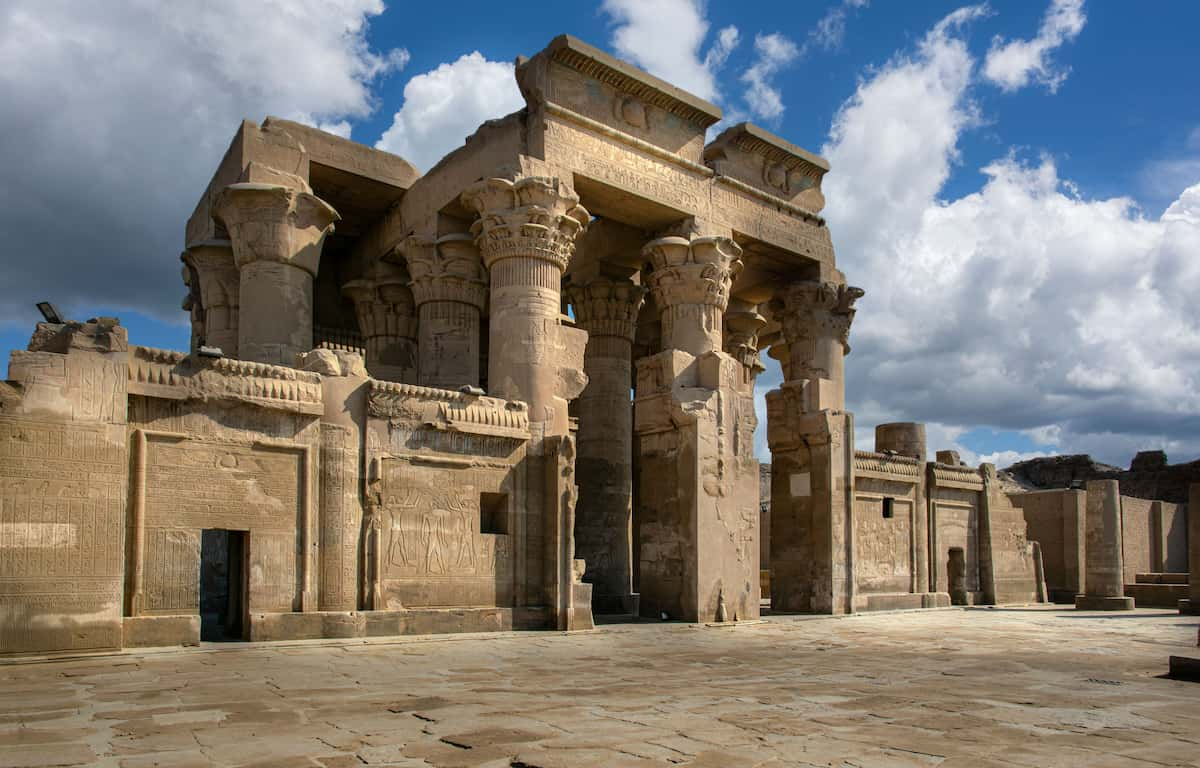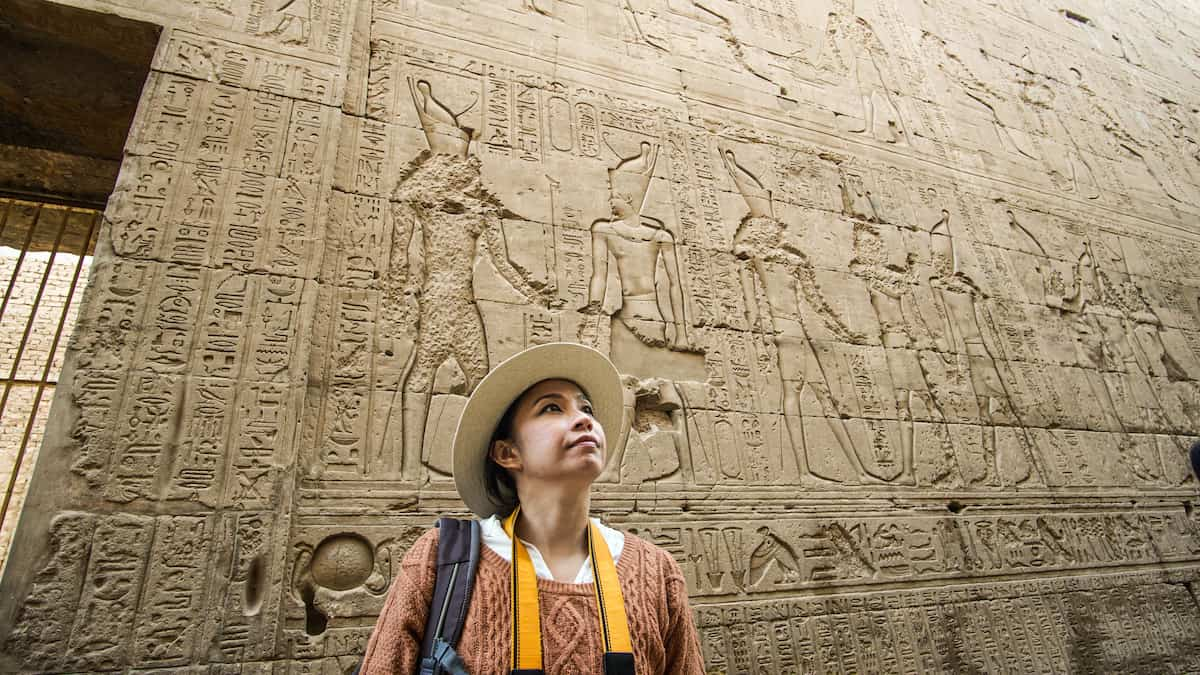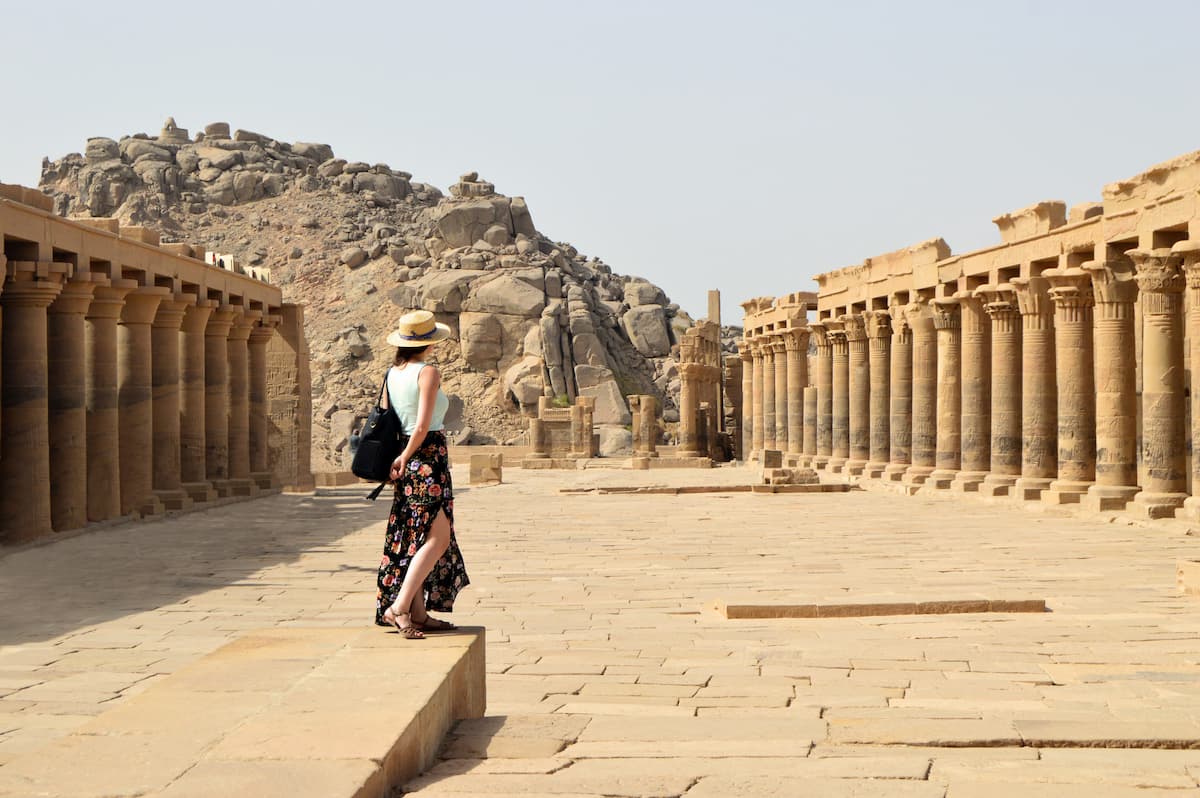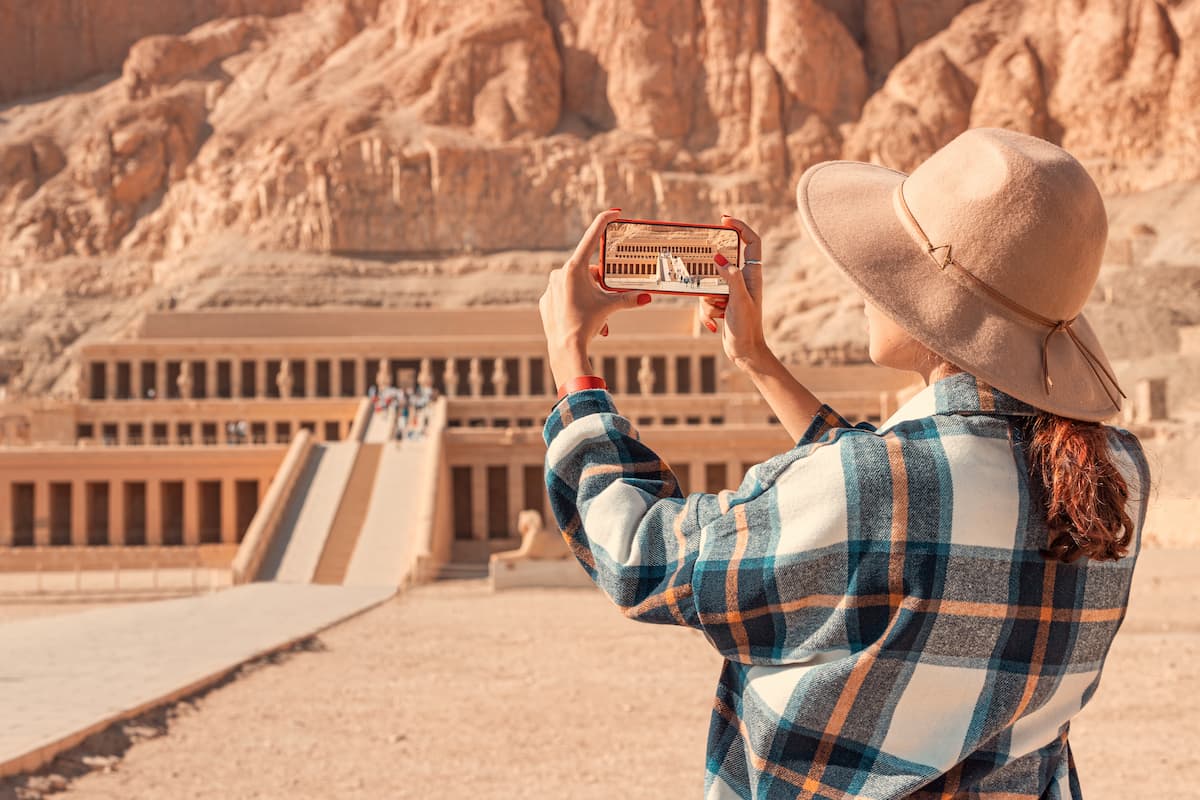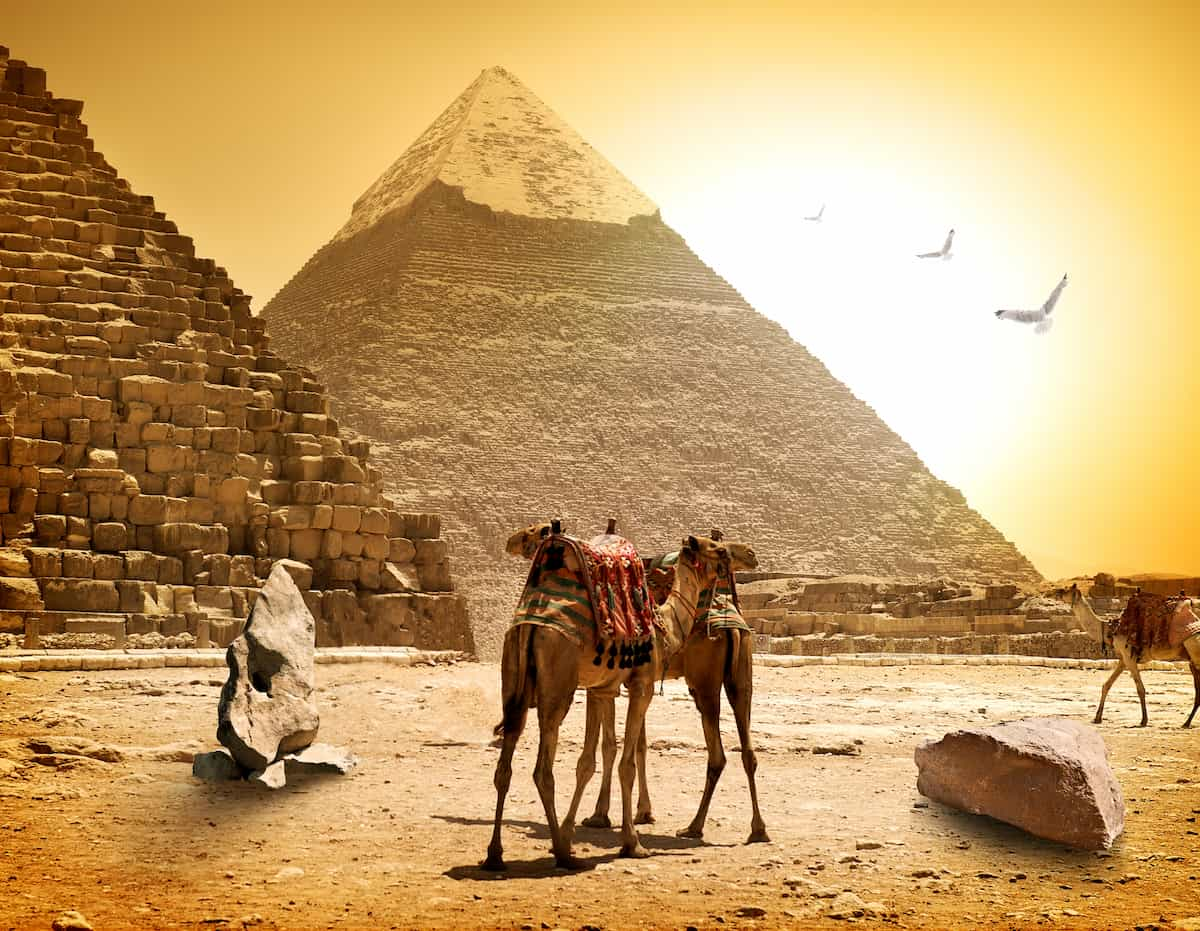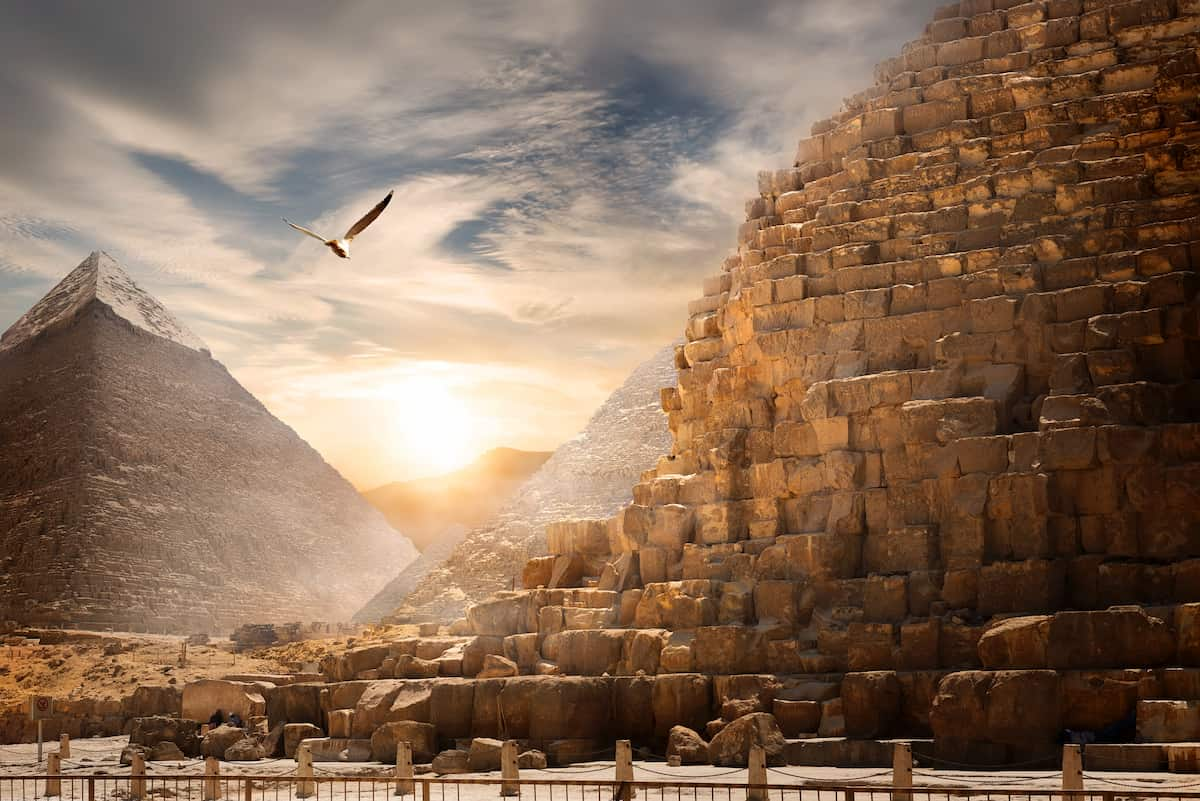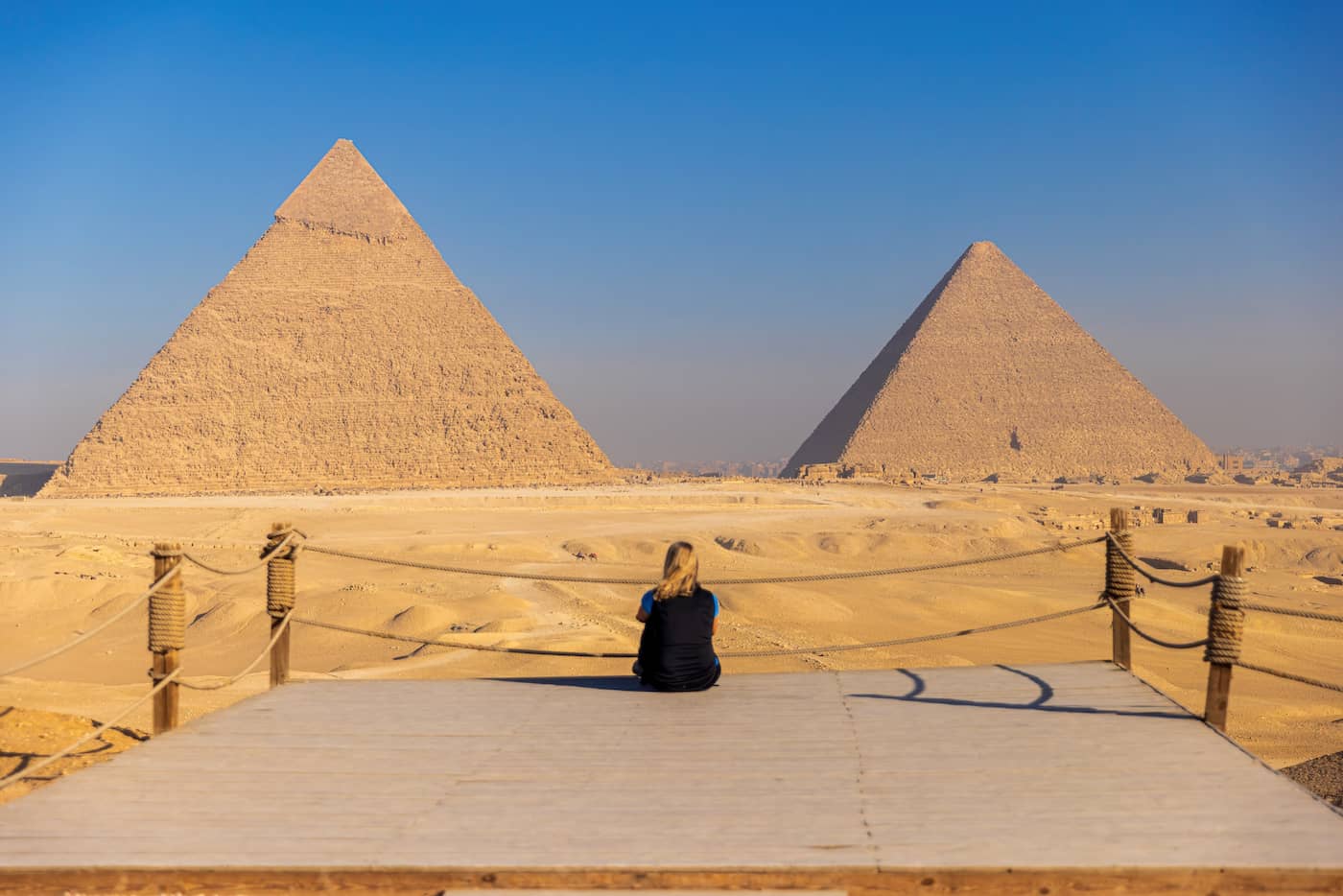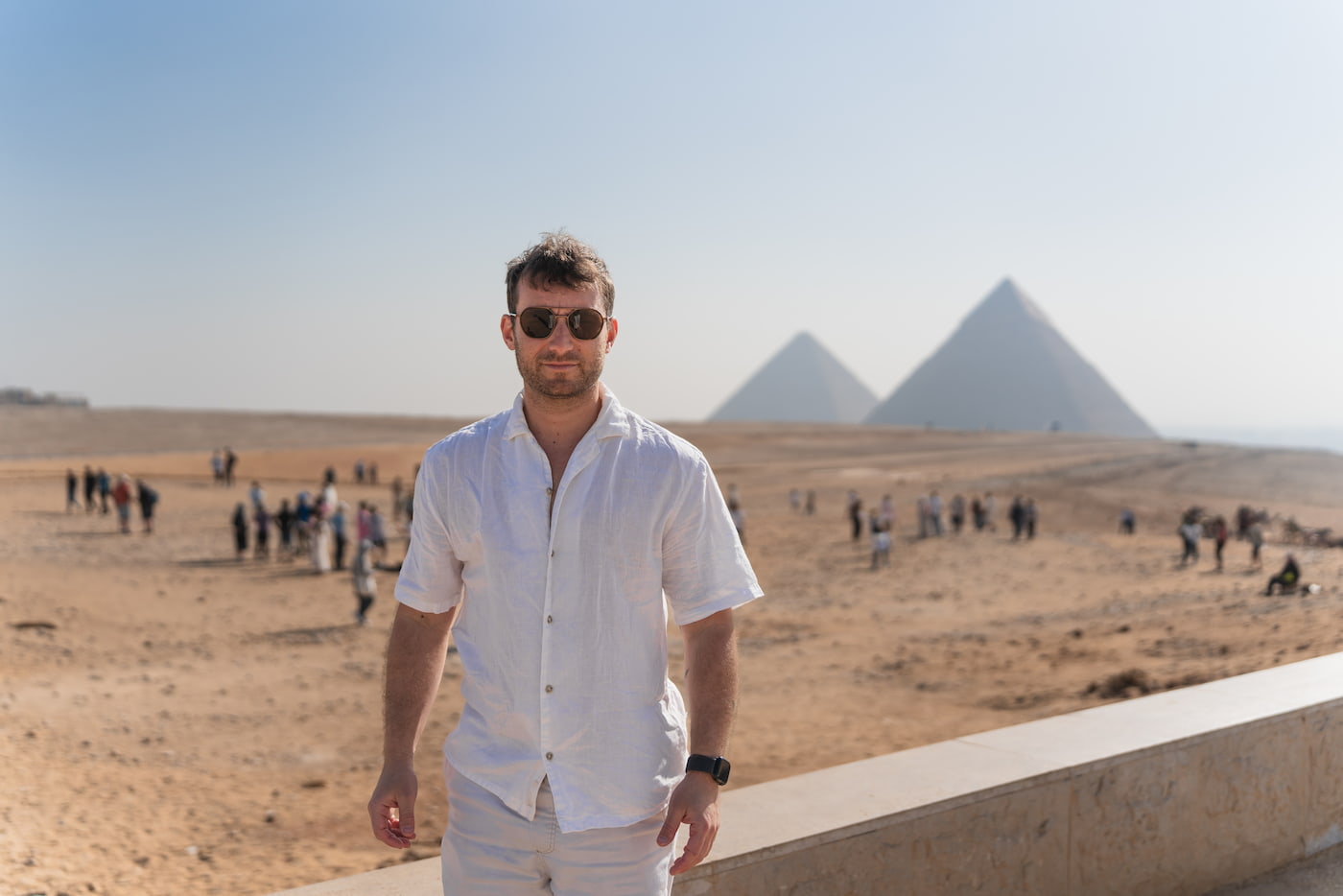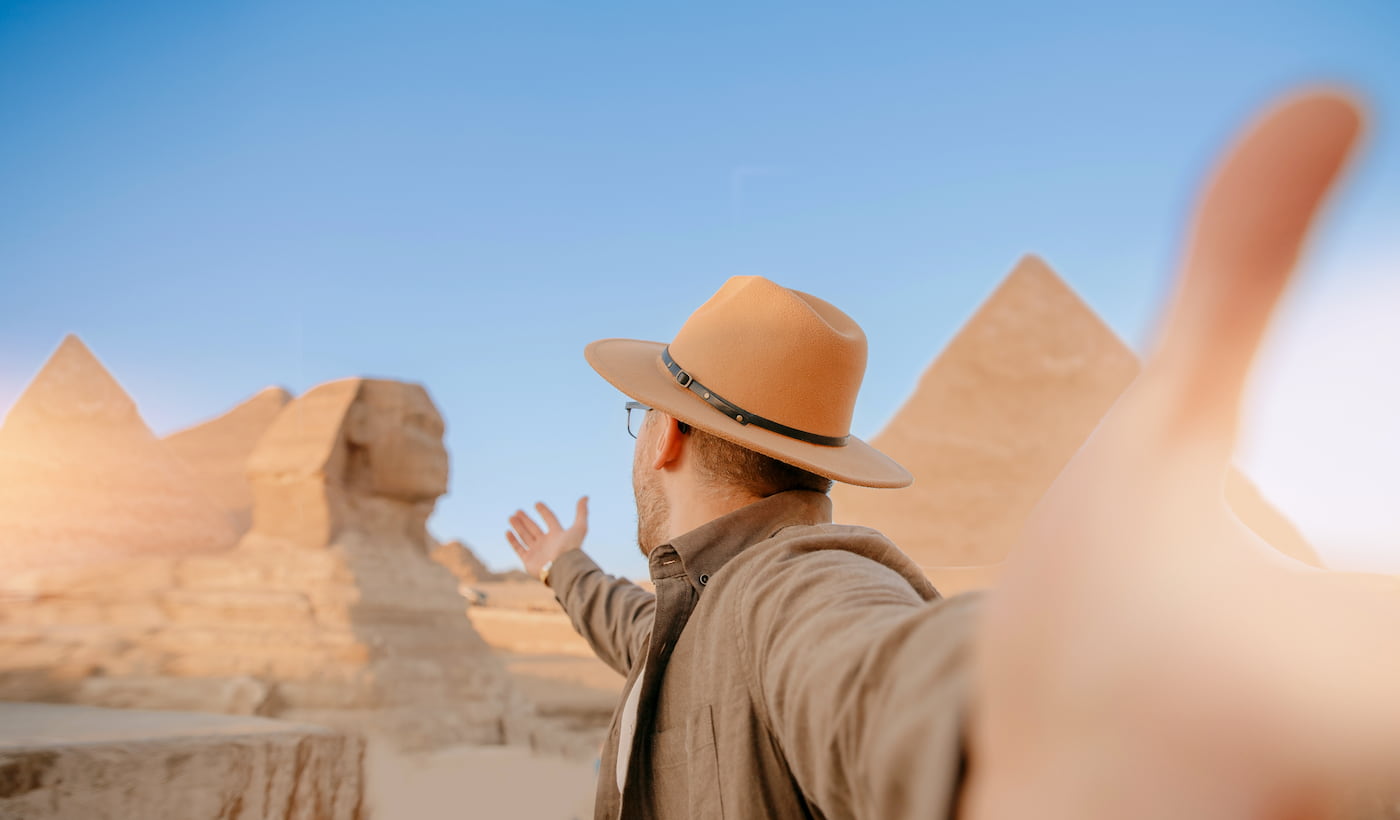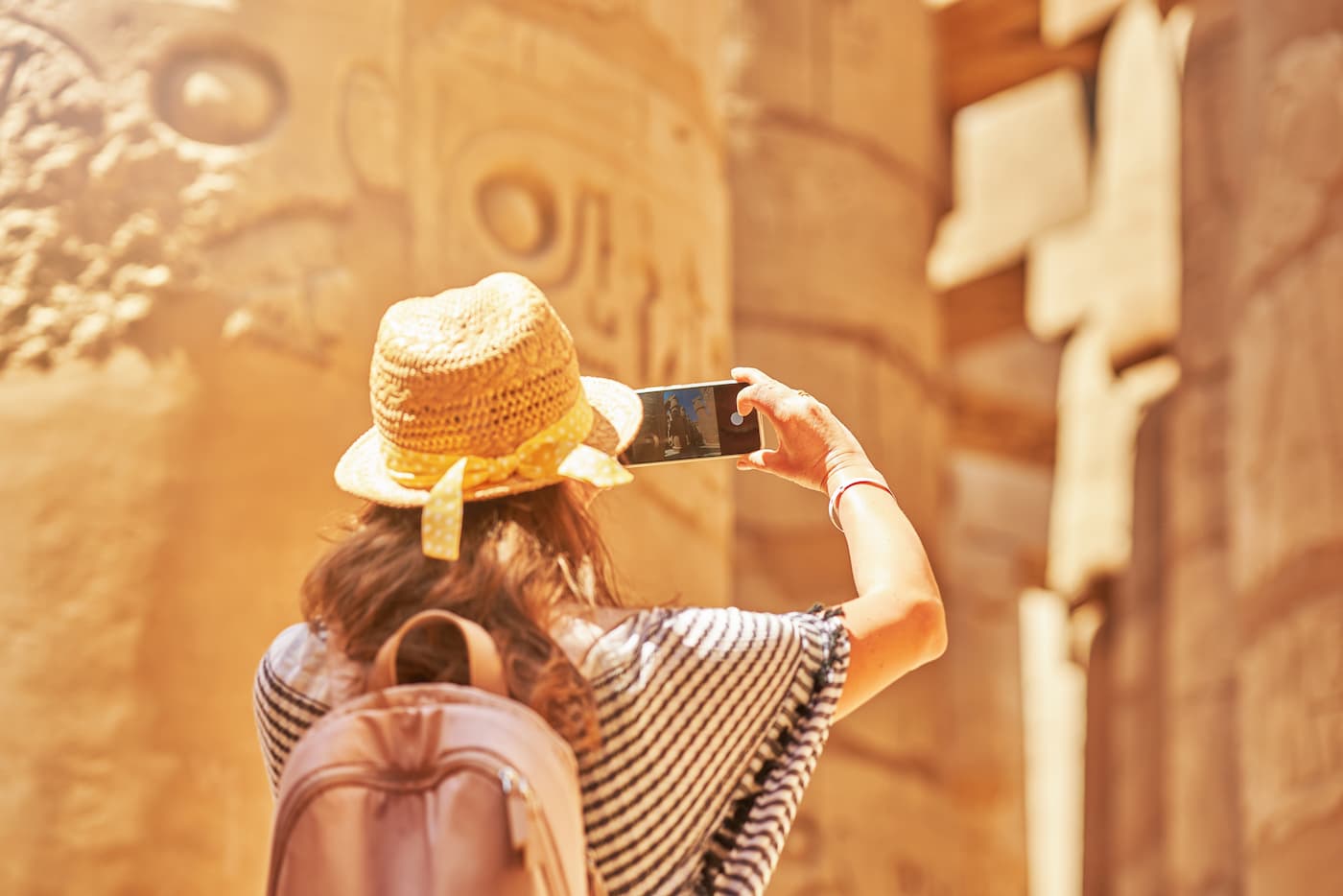Ancient Egyptian Temples: the Worship of the Gods, The Commemoration of the Pharaohs in Ancient Egypt, and the Antiquity of Egypt
Egyptian temples were built for the official worship of the gods and in commemoration of the pharaohs in ancient Egypt and regions under Egyptian control. Temples were homes for the gods or kings to whom they were dedicated. The Egyptians performed the central rituals of Egyptian religion in them: giving offerings to the gods, reenacting their mythology through festivals, and warding off the forces of chaos. These rituals were necessary for the gods to support maat, the divine order of the universe. Caring for the gods was the obligation of pharaohs, who dedicated prodigious resources to temple construction and maintenance.
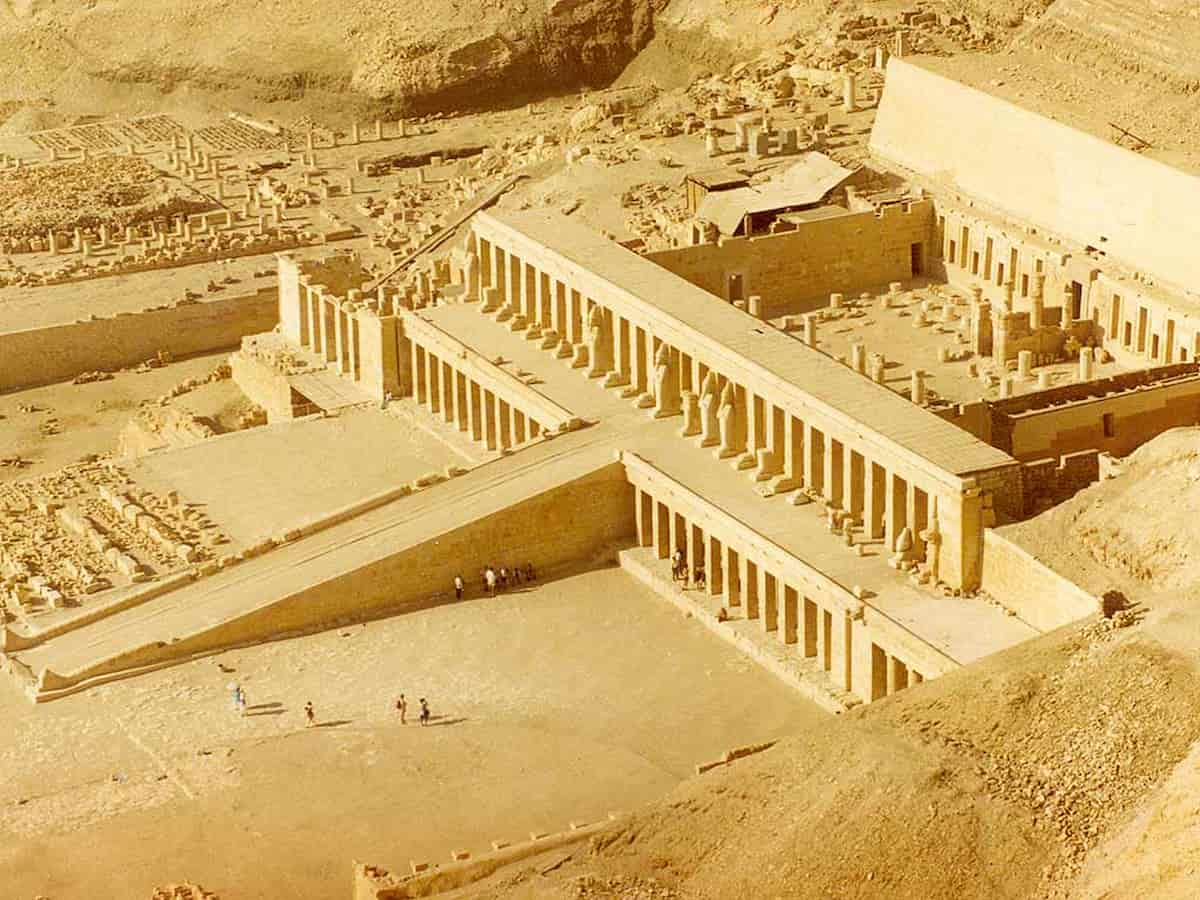
Ancient Egyptian Temples
While most ritual work was left to the priests by the pharaohs, common people were barred from actually taking part in ceremonies, including entry into the most sacred parts of the temple. That said, the temple was still quite an important religious place for all ranks of Egyptians who could visit it to pray, offer sacrifices, or ask for oracular guidance.
Contents of The Temple
The Ancient Egyptian Temple Architecture
The very important part of the temple was the sanctuary, normally housing a cult image of its god. While the areas outside the inner sanctum expanded and became far more elaborate over time, temples essentially evolved from small shrines in late Prehistoric Egypt (late fourth millennium BC) into large stone edifices in the New Kingdom (c. 1550–1070 BC) and afterwards.
They were the biggest and longest-lasting instances of ancient Egyptian architecture with elements arranged and decorated according to complicated religious symbolism. Usually, it was laid out as a series of closed halls, courts open to the air, and entrance pylons all arranged along the path that festival processions followed. There was an outer wall behind the temple itself that enclosed the secondary buildings.
Egypt now boasts the survival of a few dozen temples. These lost their shine to the centuries of violence and neglect brought about by Christianity. Some of them have gone on to be recognised as the great cultural heritage sites of modern-day Egypt that provide the bulk of the income for the Egyptian economy. Egyptologists research the remaining statues to gather proof of ancient Egyptian life, and also investigate broken temples.
employers in temples
Large temples had extensive landholdings under their control, and they themselves employed thousands of laymen to meet their requirements. In this way, temples could be called economic as well as religious centres. Given that the priests managed these mighty institutions with their mighty powers, while they may have been under the king in name, they may have, in fact, been serious rivals to his authority.
Construction of Temples
Like all ancient Egyptian architecture, Egyptian temple designs emphasised order, symmetry, and monumentality and combined geometric shapes with stylised organic motifs. Elements of temple design also alluded to the form of the earliest Egyptian buildings. The temple pattern could vary considerably, apart from the distorting effect of additional construction. Many temples, known as hypogea, were cut entirely into living rock, as at Abu Simbel, or had rock-cut inner chambers with masonry courtyards and pylons, as at Wadi es-Sebua.
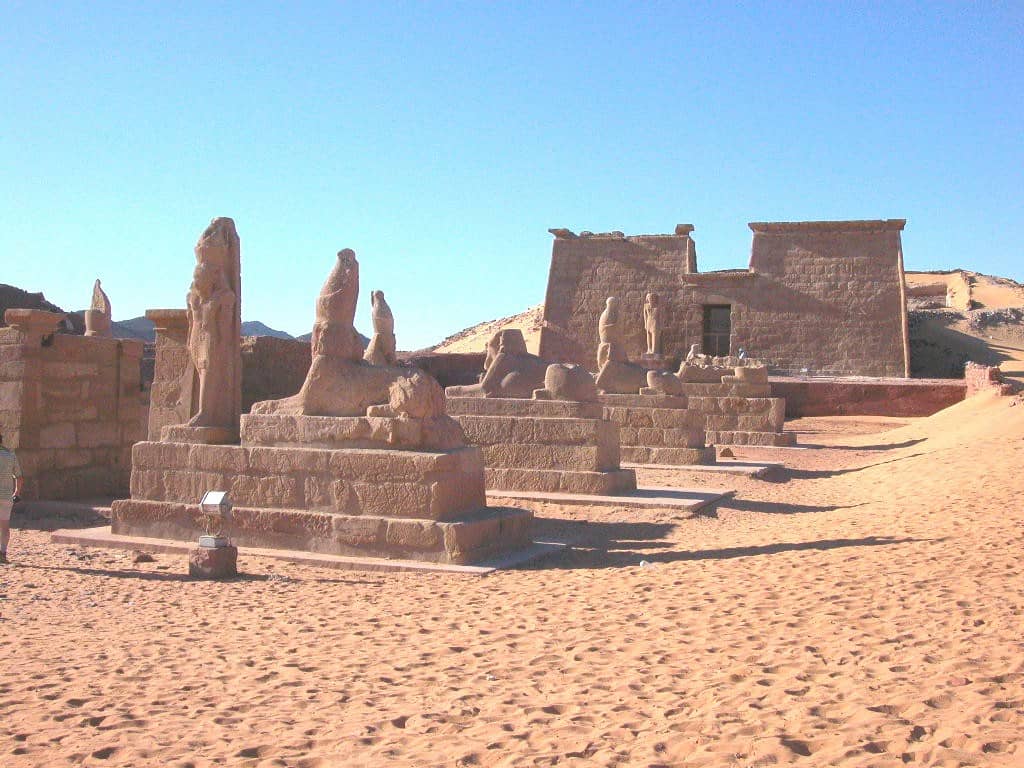
Wadi es-Sebua
They used much the same layout as free-standing temples, but used excavated chambers rather than buildings as their inner rooms. In several temples, such as those of Mentuhotep II and Hatshepsut at Deir el-Bahari, one found the processional way rising by a series of terraces rather than being lodged on basis of one level. The Ptolemaic Temple of Kom Ombo acquired two main sanctuaries. That led to the production of two parallel axes that run the length of the building. The most idiosyncratic temple style was that of the Aten temples built by Akhenaten at Akhetaten, in which the axis passed through a series of entirely open courts filled with altars.
Design and Decoration of Ancient Egyptian Temples
1- Inner chambers
The temple’s inner chambers centred on the sanctuary of the temple’s primary god, which typically lay along the axis near the back of the temple building, and in pyramid temples directly against the pyramid base. The sanctuary was the focus of temple ritual, the place where the divine presence manifested most strongly. The form in which it manifested itself varied. In Aten temples and traditional solar shrines, the object of ritual was the sun itself or a benben stone representing the sun. In many mortuary temples, the inner areas contained statues of the deceased pharaoh, or a false door where his ba (“personality”) was believed to appear to receive offerings.
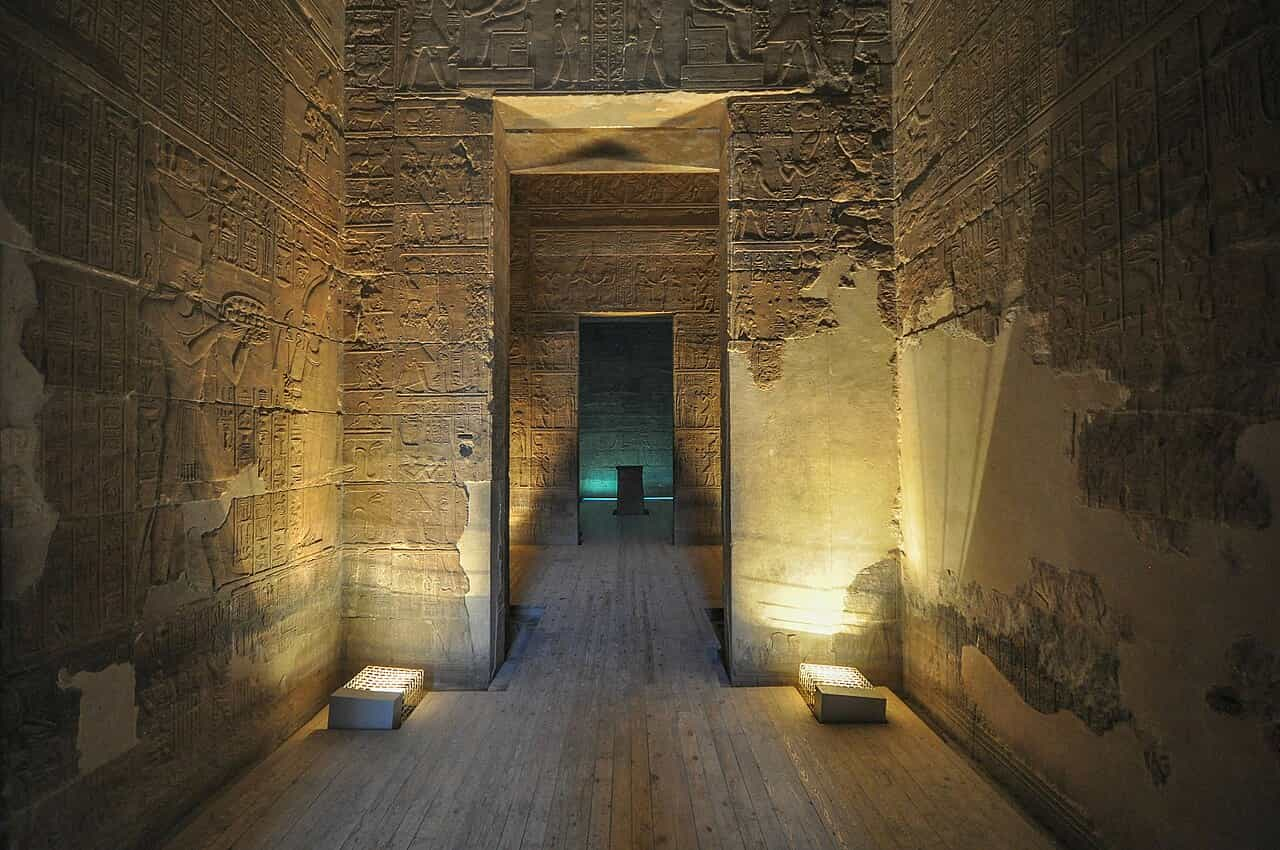
Three small antechambers flanked by dark rooms lead to the sanctuary – Temple of Isis
2- Halls and courts
Hypostyle halls, covered rooms filled with columns, appear in temples throughout Egyptian history. By the New Kingdom, they typically lay directly in front of the sanctuary area. These halls were less restricted than the inner rooms because they were open to laymen, at least in some cases. They were often less dark as well: New Kingdom halls rose into tall central passages over the processional path. That allows a clerestory to provide dim light.
The epitome of this style is the Great Hypostyle Hall at Karnak, whose largest columns are 69 feet (21 m) tall. In later periods, the Egyptians favoured a different style of hall, where a low screen wall at the front let in the light. The shadowy halls, whose columns were often shaped to imitate plants such as lotus or papyrus, were symbolic of the mythological marsh that surrounded the primaeval mound at the time of creation. The columns could also be equated with the pillars that held up the sky in Egyptian cosmology.
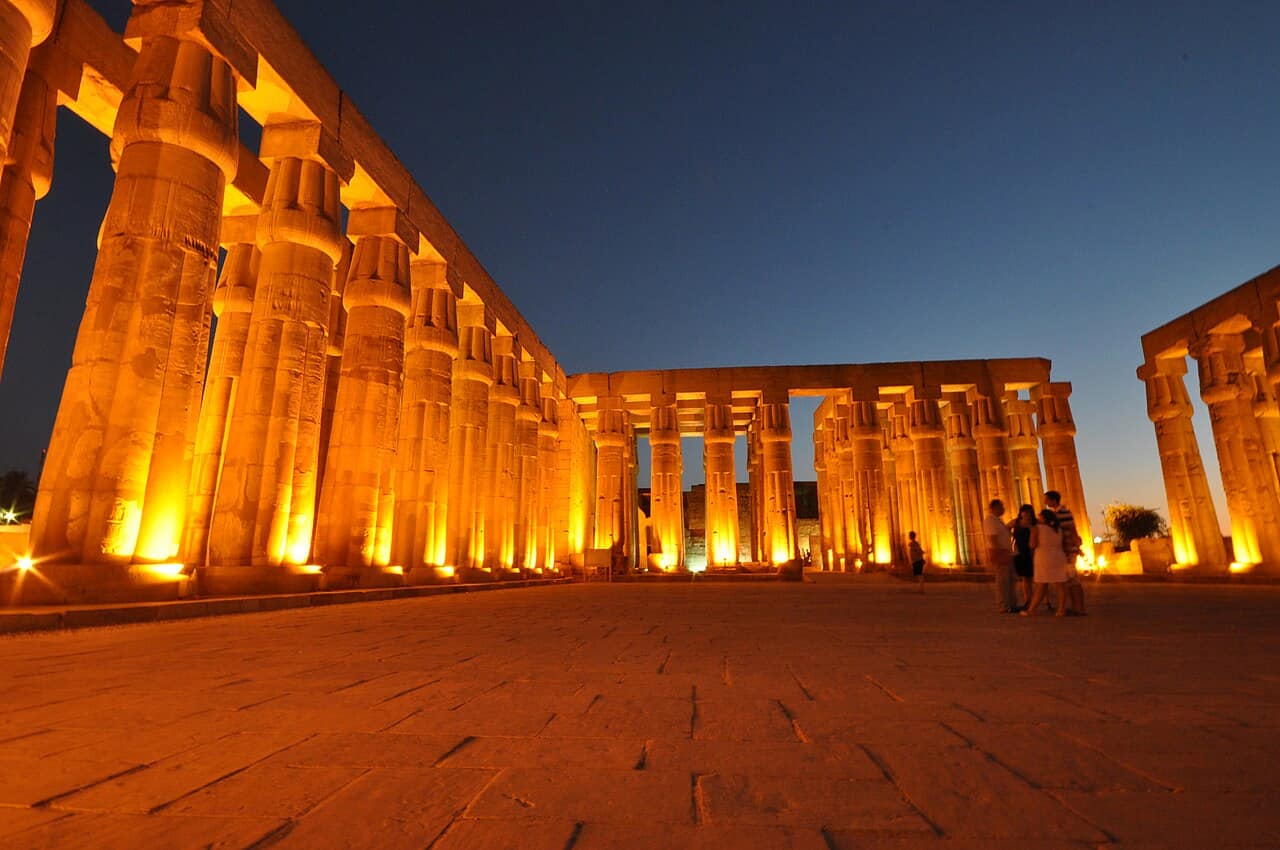
The Court of Amonhotep III – Luxor Temple
3- Enclosure
Outside the temple building proper was the temple enclosure, surrounded by a rectangular brick wall that symbolically protected the sacred space from outside disorder. On occasion, this function was more than symbolic, especially during the last native dynasties in the fourth century BC, when the walls were fully fortified in case of invasion by the Achaemenid Empire. In late temples, these walls frequently had alternating concave and convex courses of bricks, so that the top of the wall undulated vertically.
The Importance of Ancient Egyptian Temples
1- The Religious Importance
Ancient Egyptian temples were meant as places for the gods to reside on earth. Indeed, the term the Egyptians most commonly used to describe the temple building, ḥwt-nṯr, means “mansion (or enclosure) of a god”. A divine presence in the temple linked the human and divine realms and allowed humans to interact with the god through ritual. These rituals were therefore a key part of the maintenance of maat, the ideal order of nature and of human society in Egyptian belief. Maintaining maat was the entire purpose of Egyptian religion, and it was the purpose of a temple as well.
Although the pharaoh delegated his authority, the performance of temple rituals was still an official duty, restricted to high-ranking priests. The participation of the general populace in most ceremonies was prohibited. Much of the lay religious activity in Egypt instead took place in private and community shrines, separate from official temples. As the primary link between the human and divine realms, temples attracted considerable veneration from ordinary Egyptians.
Each temple had a principal deity, and most were dedicated to other gods as well. Not all deities had temples dedicated to them. Many demons and household gods were involved primarily in magical or private religious practice, with little or no presence in temple ceremonies. Other gods had significant roles in the cosmos, but, for unclear reasons, were not honoured with temples of their own.
The Mortuary Temples
Pharaohs also built temples where offerings were made to sustain their spirits in the afterlife, often linked with or located near their tombs. These temples are traditionally called “mortuary temples” and regarded as essentially different from divine temples. The difficulty of separating divine and mortuary temples reflects the close intertwining of divinity and kingship in Egyptian belief.
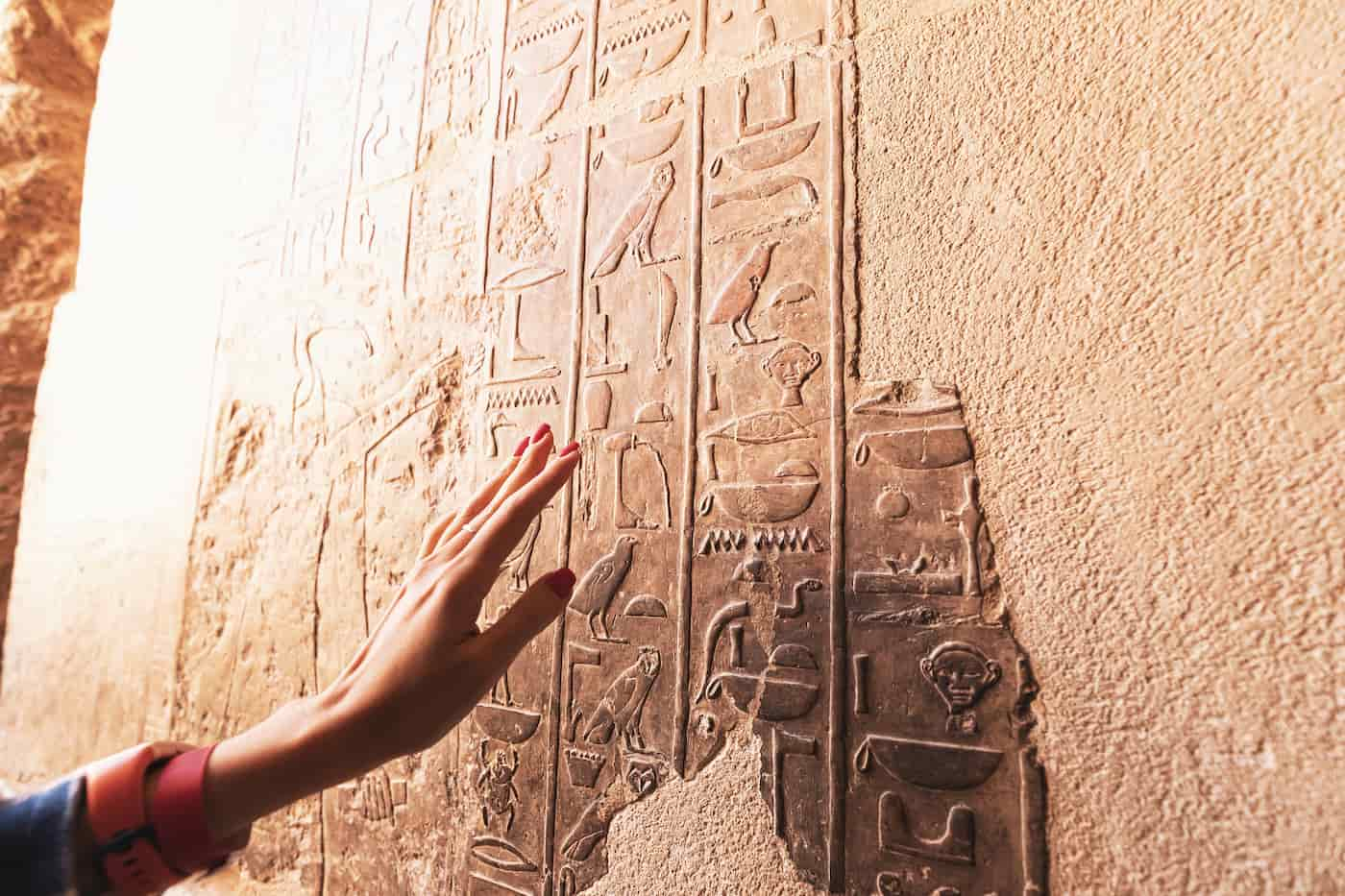
drawings on the walls of the temples
2- The Economic and Administrative Importance
Ancient Egyptian temples were key centres of economic activity. The largest required prodigious resources and employed tens of thousands of priests, craftsmen, and labourers. Much of a temple’s economic support came from its own resources. These included large tracts of land beyond the temple enclosure, sometimes in a completely different region than the temple itself. The most important type of property was farmland, which produced grain, fruit, or wine, or supported herds of livestock. The temple either managed these lands directly, rented them out to farmers for a share of the produce, or managed them jointly with the royal administration.
Ancient Egyptian temples also launched expeditions into the desert to collect resources such as salt, honey, or wild game or to mine precious minerals. Some owned fleets of ships with which to conduct their own trade across the country or even beyond Egypt’s borders. Thus, as Richard H. Wilkinson says, the temple estate “often represented no less than a slice of Egypt itself”. As a major economic centre and the employer of a large part of the local population, the temple enclosure was a key part of the town in which it stood. In contrast, when a temple was founded on empty land, a new town was built to support it.
Once Egypt became a Roman province, one of the first measures of the Roman rulers was to implement a reform on land possession and taxation. The ancient Egyptian temples, as important landowners, were made to either pay rent to the government for the land they owned or surrender that land to the state in exchange for a government stipend. However, the temples and priests continued to enjoy privileges under Roman rule, like exemption from taxes and compulsory services. On the official level, the leading officials of the temples became part of the Roman ruling apparatus by, for example, collecting taxes and examining charges against priests for violating sacral law.
List of the Most Important Ancient Egyptian Temples
- Abu Simbel Temple: The grand temple of Abu Simbel is another greatest awe sort of monument of Egypt, near the Nubian border to the south. It was carved out of the hard rock by King Ramesses II, also known as The Great, over a hundred and fifty years after 1290 BCE. The temple is most known for the four tall seated colossal figures at the facade. Inside, standing colossal statues of the king line the way to the sanctuary, where, seated, are the four gods: Amun Ra, Ra Horakhty, Ptah, and a deified Ramesses II himself.
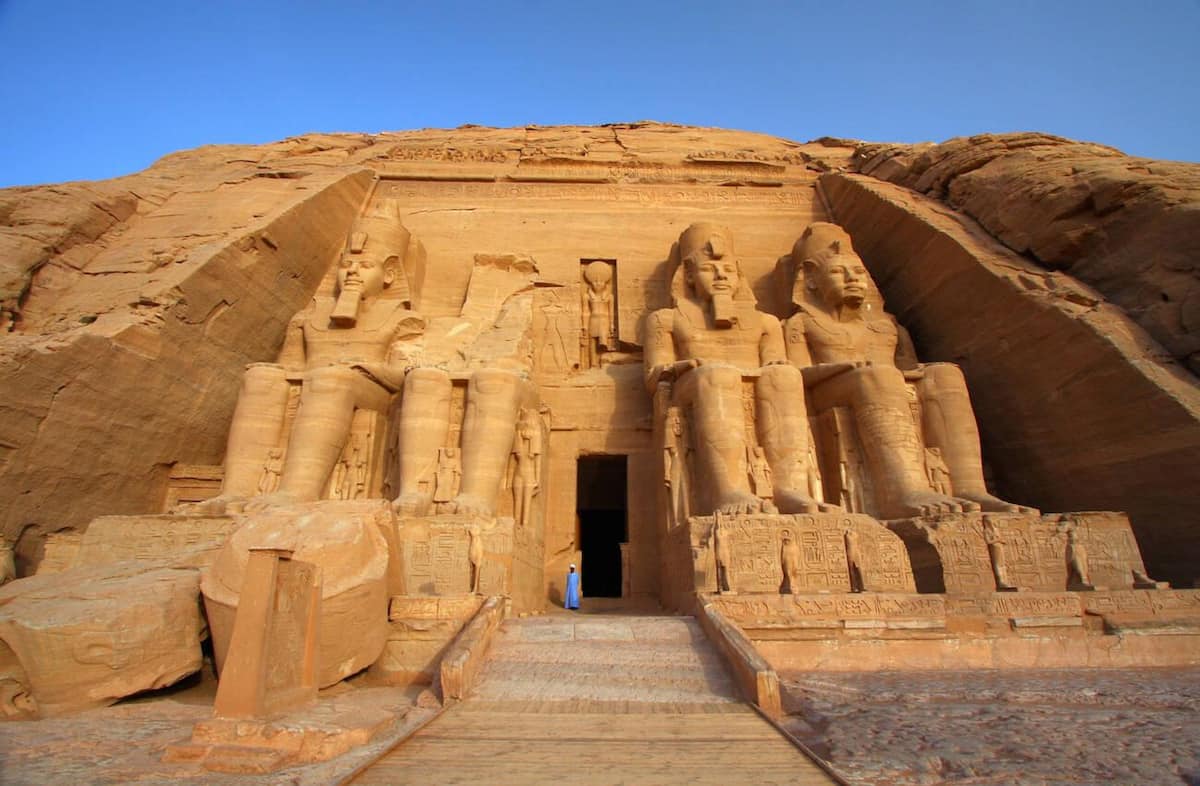
Abu Simbel Temple
- Karnak Temple: The Karnak Temple, or rather the complex of temples of Karnak in Luxor, Egypt, is one of the most impressive of Ancient Egyptian sites and once formed part of the city of Thebes. Together with the Luxor Temple and the Valley of the Kings, the Karnak Temple is a UNESCO World Heritage site. And you will find all the information about it on our site (Egypt United Tours).
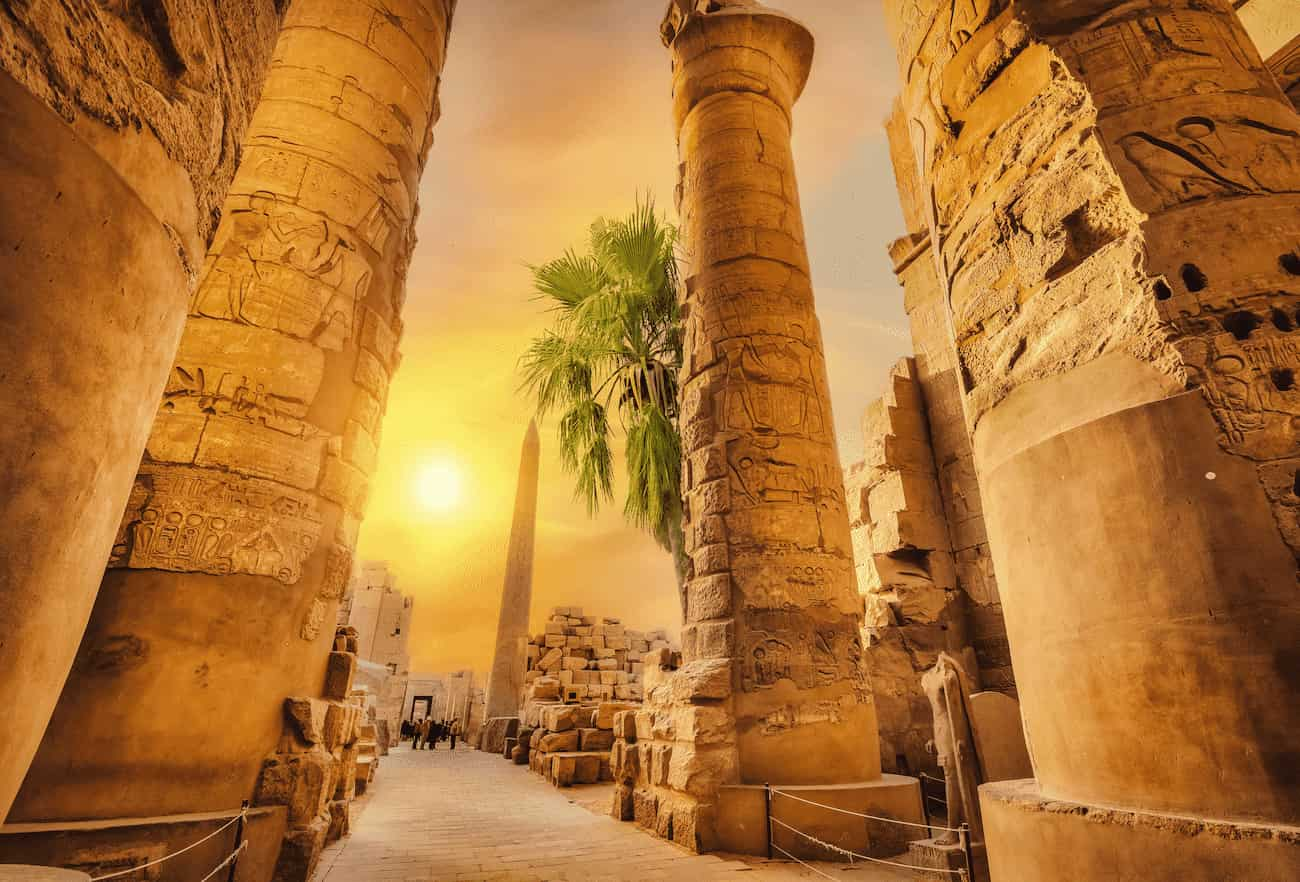
Karnak Temple
- Temple of Edfu: Edfu Temple is one of the most majestic and preserved temples of ancient Egyptian times. It is dedicated to the worship of the god Horus. Construction on the western bank of the Nile started during the reign of Ptolemy III (246–221), 237 BC, but it was completed much later in the time frame of Ptolemy XII (80–51), 57 BC, nearly 180 years later.
- Kom Ombo Temple: The Kom Ombo Temple in Egypt is a sacred Ptolemaic temple co-dedicated to the crocodile deity Sobek and falcon-headed Haroeris. This dual dedication is quite atypical and is reflected in the symmetrical design of the Kom Ombo Temple. Built under Ptolemy VI of the Ptolemaic Dynasty in the 2nd century BC, the Kom Ombo Temple was added to under the Romans.
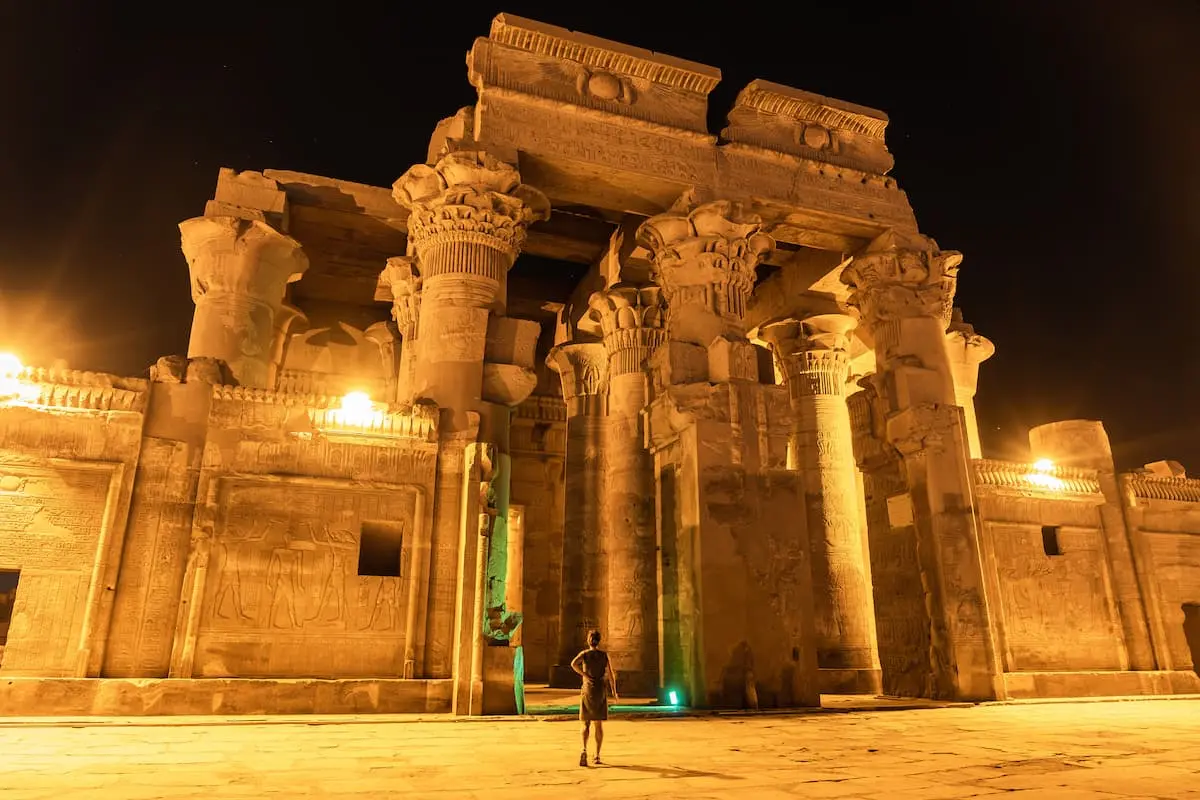
Kom Ombo Temple
- Luxor Temple: The temple was built by Amenhotep III (1390-1352 BC) but completed by Tutankhamun (1336-1327 BC) and Horemheb (1323-1295 BC), and then further added to by Rameses II (1279-13 BC). Toward the rear is a granite shrine dedicated to Alexander the Great (332-305 BC).
The temple has been in almost continuous use as a place of worship right up to the present day. During the Christian era, the temple’s hypostyle hall was converted into a Christian church, and the remains of another Coptic church can be seen to the west.
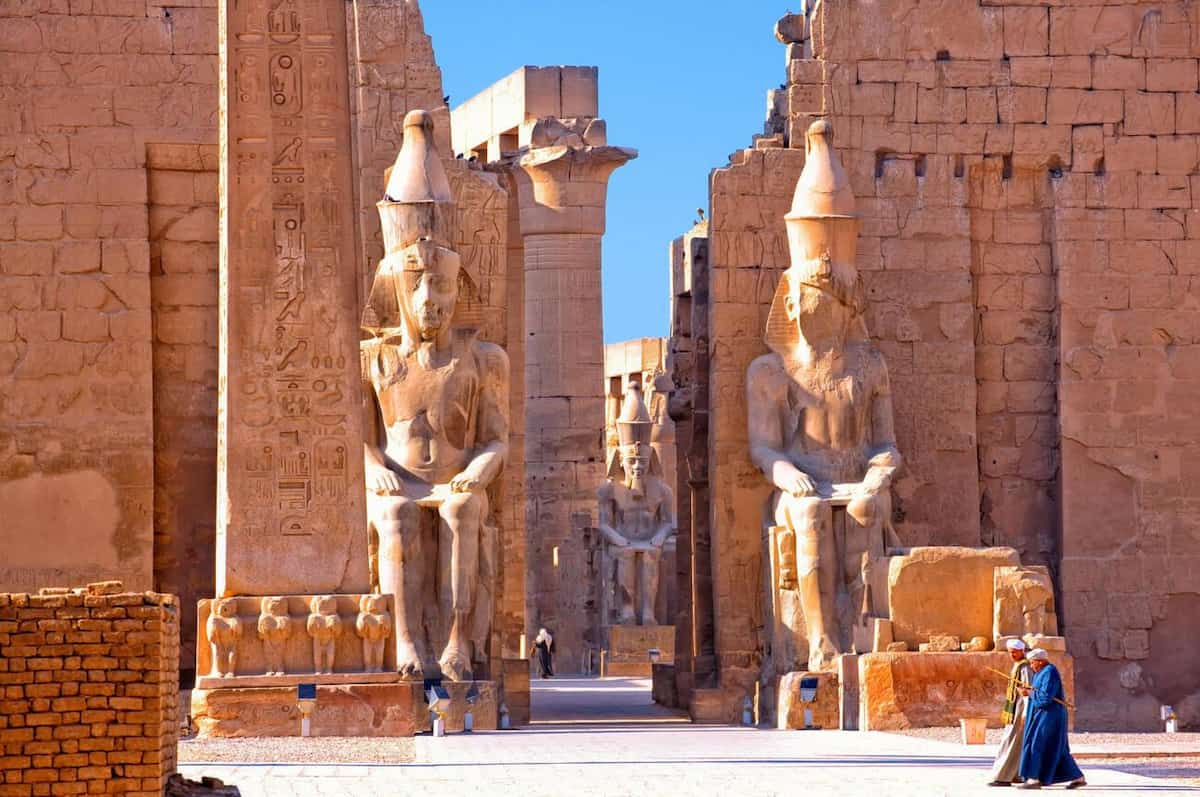
Luxor Temple
- Philae Temple: The Philae Temple is a gem in the crown of the River Nile that stands majestically on Agilkia Island, southern Egypt. This legendary site was built in 690 BC to honour Isis, the Egyptian goddess of healing and magic. As one of the last places of worship built in the classical Egyptian style, the Philae Temple has a complex and fascinating history.
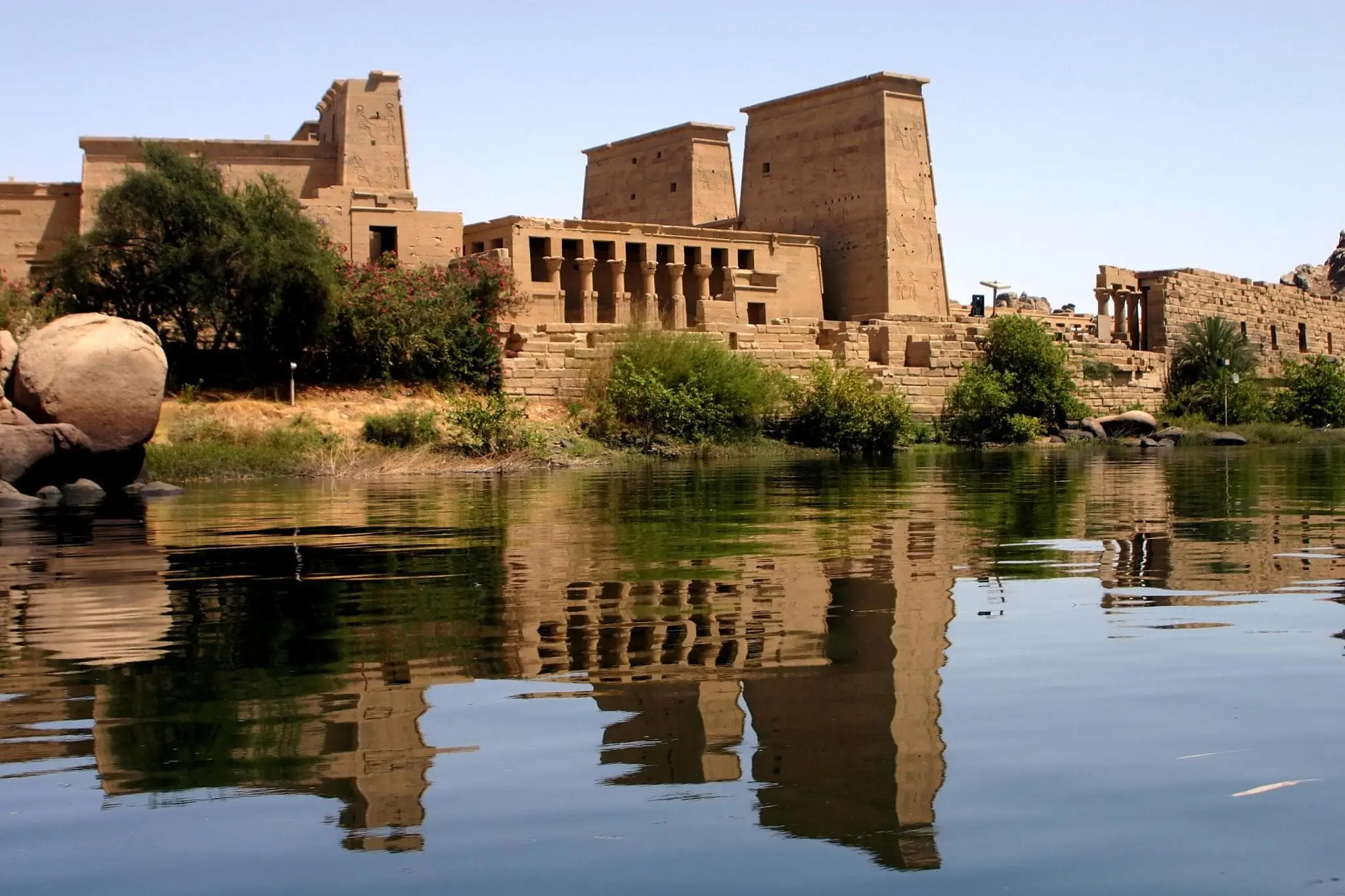
Philae Temple
- Ramesseum: The Ramesseum is the memorial temple (or mortuary temple) of Pharaoh Ramesses II. It is located in the Theban Necropolis in Upper Egypt, on the west of the River Nile, across from the modern city of Luxor. It had originally been called the “House of millions of years of Usermaatra-setepenra that unites with Thebes-the-city in the domain of Amon.” Usermaatra-setepenra was the prenomen of Ramesses II.
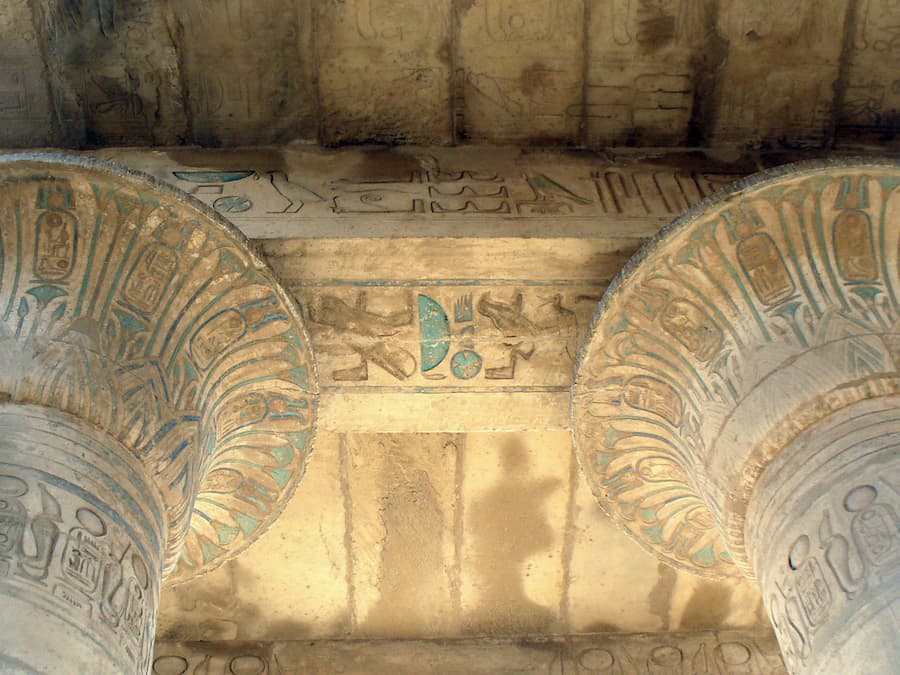
Ramesseum Temple
There is a lot of information about all these ancient Egyptian temples on our site, Egypt United Tours.
Conclusion
Ancient Egyptian temples were truly magnificent and sacred structures. They symbolised their theology and held a legitimate place for their gods. The temples were also centres of ritual activity that helped maintain cosmic order and peace within their society. The lasting testimony to these major edifices reveals the religious fervour of Egyptians about God and the arts; the respect they had for the architectural genius; and the spirit of synthesis with nature that they possessed. All of these continue to fill one with awe and scholarly curiosity today.
Ancient Egyptian Temples were built for over 3,500 years in Ancient Egypt, and mostly open courts, sun temples to the sun god Re, while the last one to be built was the cult Temple to Isis at Philae in Aswan. Most Ancient Egyptian temples that have survived are from the Greco-Roman period, such as Esna, Edfu, Kom Ombo, Dendera and Philae, but we also have many temples from other periods, especially in Southern Egypt due to the drier climate.

